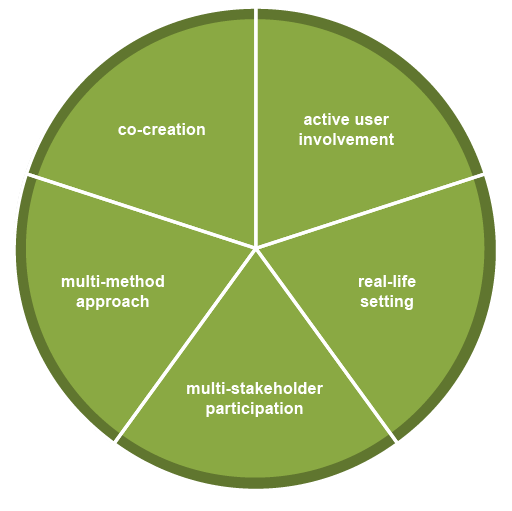The key elements of Living labs
ENoLL (in late 2020) defined Living Labs on their website as:
‘user-centred, open innovation ecosystems based on systematic user co-creation approach, integrating research and innovation processes in real life communities and settings.
LLs are both practice-driven organisations that facilitate and foster open, collaborative innovation, as well as real-life environments or arenas where both open innovation and user innovation processes can be studied and subject to experiments and where new solutions are developed.
LLs operate as intermediaries among citizens, research organisations, companied, cities and regions for joint value co-creation, rapid prototyping or validation to scale up innovation and businesses. LLs have common elements but multiple different implementations.’
The common elements of a Living Lab that they note, and which were set out in the introductory video to this session, are:
| 1. active user involvement |
| 2. real-life setting |
| 3. multi-stakeholder participation |
| 4. multi-method approach |
| 5. co-creation. |
These five elements are set out as a cycle in Figure 1.1. We will return to these elements when we look at the AgriLink Living Labs in Session 2, but first I want to finish this session by briefly looking at the many types and forms of innovation highlighted in the Living Lab and agricultural practitioner communities.
Types of Living Labs

